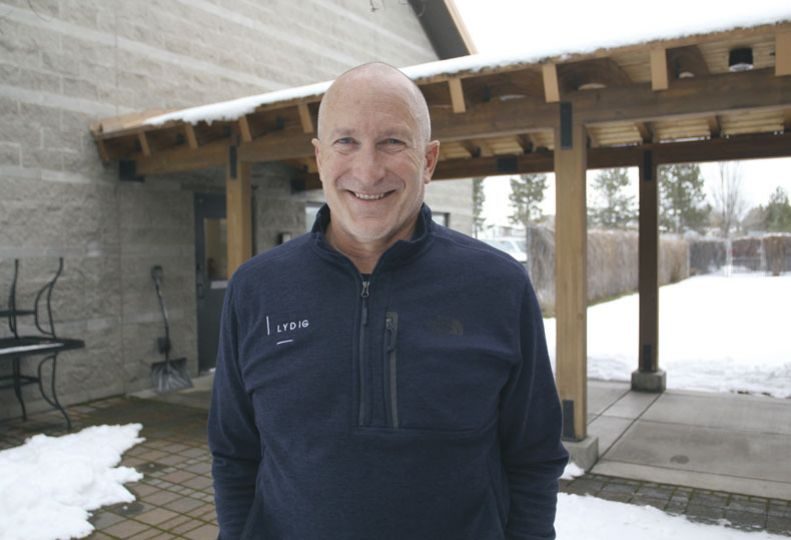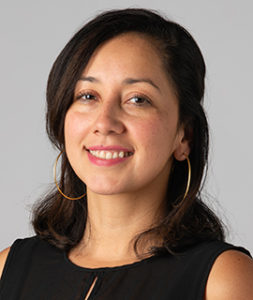
Home » Parting Thoughts with Lydig Construction's Mark Bray
Parting Thoughts with Lydig Construction's Mark Bray
~

March 16, 2023
Mark Bray, 61, retired from his chief financial officer role from Spokane Valley-based Lydig Construction Inc. on Dec. 31.
Bray joined Lydig Construction in June of 1994 as the company’s controller. In 1998, two years after the company’s founder, Paul Lydig, died, Bray became chief financial officer and one of four owners of the company.
Bray grew up in Missoula, Montana, and received a degree in accounting from the University of Montana. Upon graduating, he accepted a job in Anchorage, Alaska, where he spent nine years before moving to Spokane to work for the large general contracting company.
Lydig Construction has a staff of 170 full-time employees at its offices in Spokane Valley and Bellevue, Washington. About 90 employees are based at the Spokane Valley headquarters at 11001 E. Montgomery.
The Journal recently sat down with Bray to discuss his career, what he is most proud of accomplishing, and what he looks forward to in retirement.
What made you want to go into accounting?
It’s probably my personality. I always liked numbers and math and just thought it would be what I wanted to do. I wasn’t into the sciences, but more into business and banking. I got a degree in accounting with the thought I could go into banking or any type of business management. Out of school, I passed my certified financial planner exam and was hired in Anchorage. I just think it fit me.
How was the transition from controller to part owner and chief financial officer?
When I first started, we were much smaller than now. We had about 30 full-time employees and did between $50 million and $60 million a year. This past year, we did $375 million in revenue and had a full-time staff of 170. We also employ union laborers and carpenters, which can take us up another 200 people, so between 300 and 400 people work for us.
Moving from $50 million to close to $400 million a year, you have to implement more policies, procedures, and controls. With the amount of money you are putting in and taking out, you have to have a lot of controls to make sure everybody is handling the money right. A lot of it is doing audits and making the best decisions so nothing goes wrong in terms of how we bill, how we accept payments, and how we deposit cash.
What was the vision when you started?
Right from the start, we knew our most important asset was our people. We knew that if we could put an emphasis on treating our staff, business partners, and customers well, and put more emphasis on them, we would have a successful company. We built (the headquarters) shortly after we took ownership of the company. We wanted a place people could come and feel comfortable with. If you visit our Bellevue offices, those are beautiful too. We went from a 3,200-square-foot office across from Avista Stadium, on Havana Street, to this 25,000 square foot building.
What made you want to retire now?
I came back after a two-month vacation, and they asked, do you miss us? I said I absolutely do not miss my work at all. It was time. But I miss the people here so much. The people at Lydig are my friends who I hang out with. I’ve developed many great relationships I’m grateful for. It was great fun, but it was time to go. Like everybody else, I went through the COVID years and lost some good personal friends at young ages.
A lot of bad stuff happened during COVID that changed my perspective on life. I was going to work until the end of 2024, but I talked to our CEO and said I need to move on. We made the decision, and Katie Burton, who took my place, was ready. I didn’t want to hold her back. It just felt good. It felt perfect.
What accomplishments are you proud of?
Going from 30 people to 170 full-time people and being able to keep a family culture. We all know each other, and we’ve worked hard to keep our culture. We win a lot of awards for best places to work. That’s what I’m proud of creating. That’s probably my best.
Another thing I’m very proud of is our succession plan. There were four of us owners from 1998 to 2014. In 2014 we set a succession plan because we knew it takes a long time to sell a large company. We knew we had to start early. We hired consultants, and I managed the templates as we moved over the next seven years.
Is that how long a succession plan usually takes?
We will do it and sell 100% of our company from 2014 to now. We have 12 owners right now. We’ve brought in a lot more ownership of all ages from mid-30s to 50 years old. Larry Swartz, our CEO and one of the original four owners is still at Lydig, but he’s selling his stock.
When we got the company, we were all the same age. It’s financially difficult to sell a company like that when you’re all getting out at the same time. So now there will be a rotation of people leaving at different times. Financially, it will be easier on the company. And it’s nice to have a lot of owners.
What advice do you give to people?
Go with your passion and what you like. If it takes time, don’t worry about it, but get into what you like to do, and then work hard. I always tell my kids to work hard. If you work hard and do a good job, people will notice. You might not feel like they notice, but they do.
What do you look forward to now?
The next phase of my life. You get to be my age and realize the runway for being healthy is pretty short. My wife and I have a home in Scottsdale, Arizona. Now we might winter there in the future. We want to travel and do those things while we still can. I owe it to my wife; she wants to travel, and we are going to do that. I want to do the hobbies I liked before. I like fly fishing, that’s my number one passion. I go on one or two trips a year. I’m going to do more now. In June, my wife and I will go to Spain and do a tour from Barcelona to Madrid. I also want to travel though the U.S. I haven’t seen as much of it as I should have.
This interview has been edited for length and clarity.
Latest News Real Estate & Construction
Related Articles
Related Products




